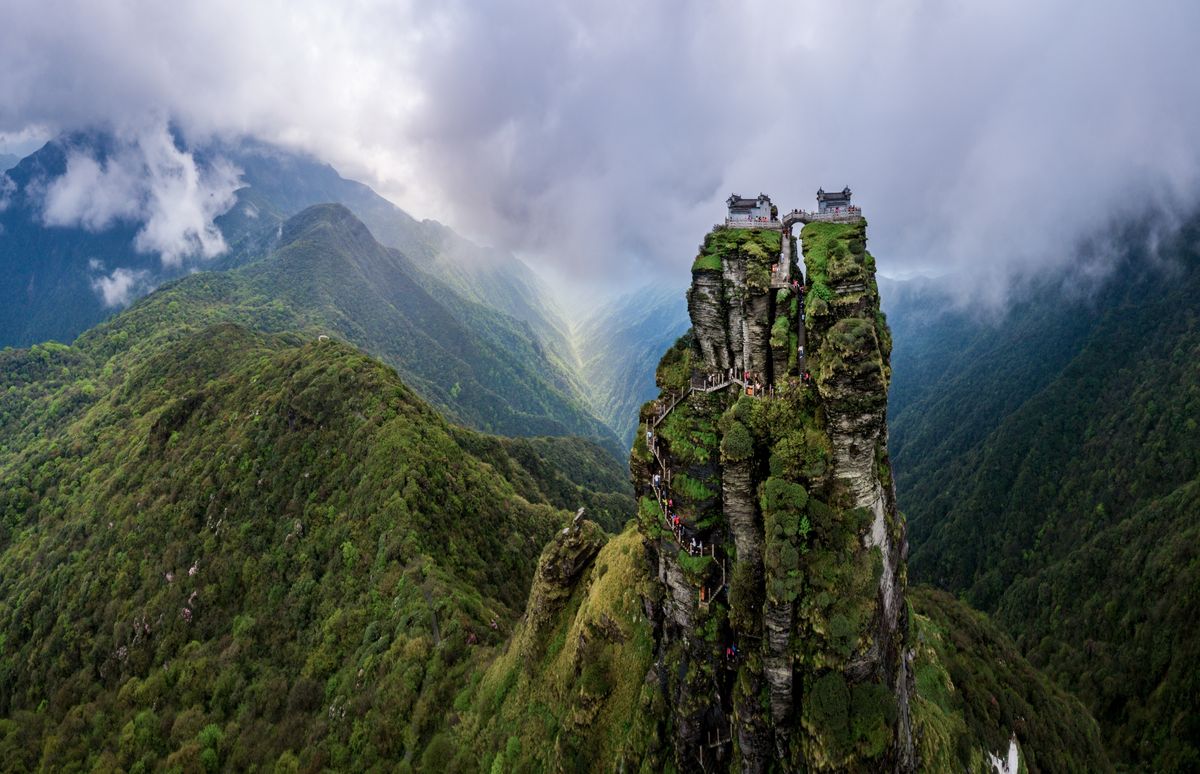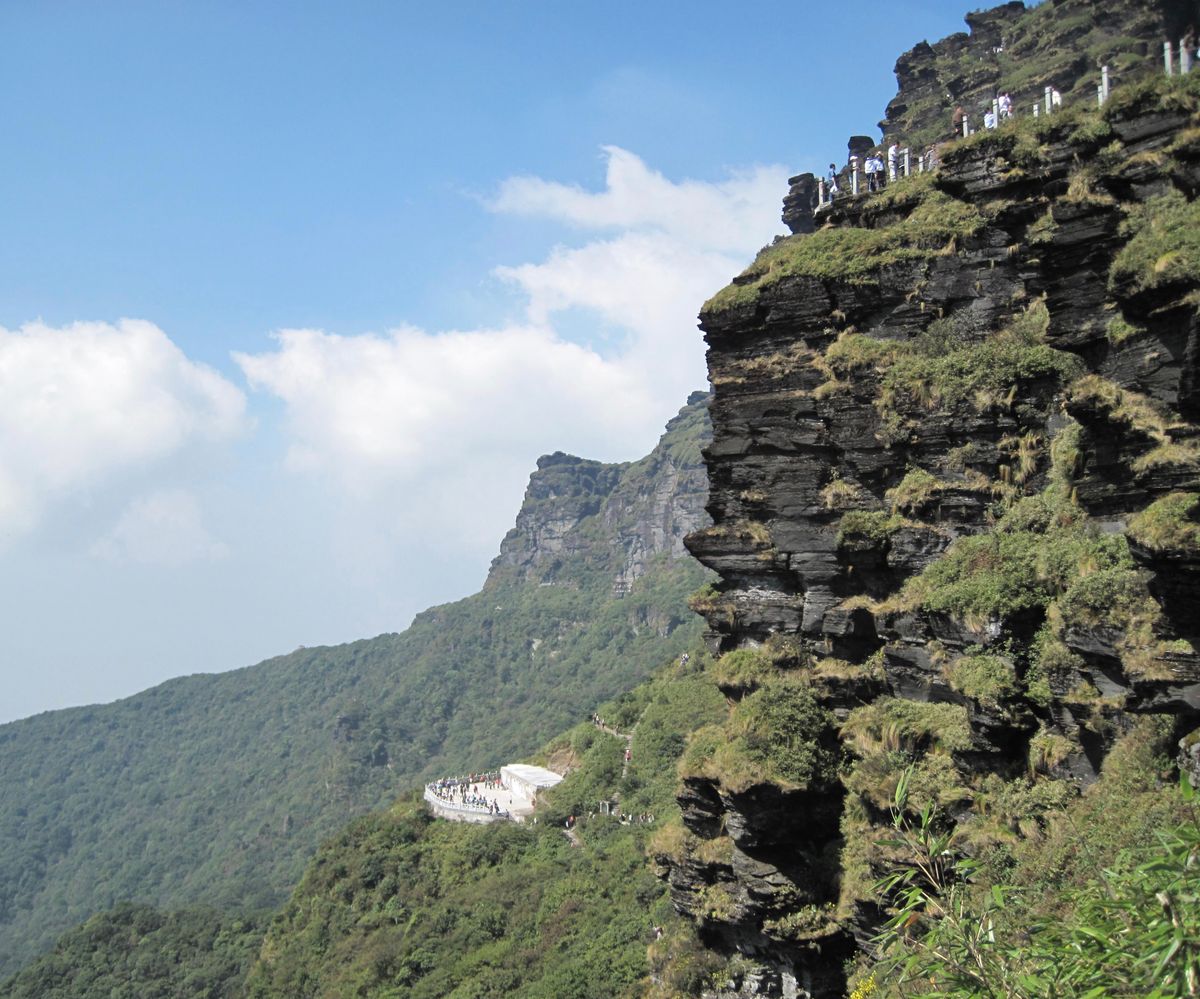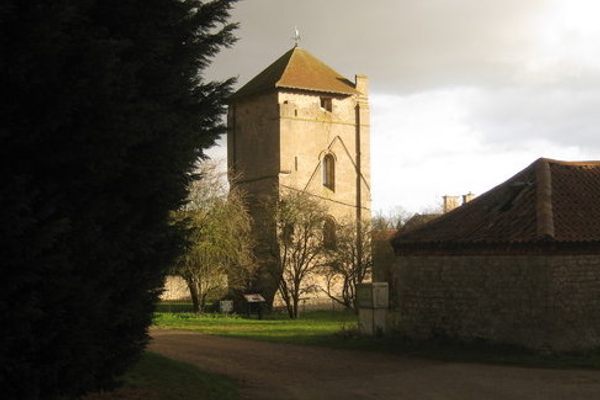About
On its own, Fanjingshan (Mount Fanjing) is a jaw-dropping pinnacle stretching hundreds of feet above the valley floor. But if you look closely, you'll see the mountain is not merely a natural wonder—it’s also steeped in Buddhist history, and features a pair of ancient Chinese temples atop its peak.
Located in the eastern Guizhou province of China, Fanjingshan is the highest peak of the Wuling Mountains, stretching 8,430 feet above sea level. Draped in dense forests filled with fir trees and Guizhou golden monkeys, it was named a UNESCO World Heritage Site in July 2018.
Like Avatar Hallelujah Mountain, Fanjingshan is much taller than it is wide, a vertical pinnacle that resembles a pencil standing on a desk. To reach the top, visitors have to walk up more than 8,000 steps or take a cable car ride up from the road below.
The two temples atop the mountain were each constructed on separate peaks, and guests must cross a small bridge to traverse the crevice between them. There are few more dramatic ways to reach a historic Buddhist temple than by crossing a mountain bridge in the clouds.
Many Buddhists believe Fanjingshan to be the bodhimaṇḍa (place of enlightenment) of Maitreya, the “future Buddha.” According to Buddhist tradition, Maitreya will return to earth in the future to help others reach enlightenment.
It’s unknown exactly when Fanjingshan was first constructed. Buddhism first came to the region in 639 during the Tang Dynasty, and the temples were likely constructed sometime after that. The temples were partially destroyed in the late 1500s during the Bozhou Rebellion, when members of the Miao ethnic group rose up against the Ming Dynasty and looted various sacred sites, but they have since been restored.
After centuries of history, Fanjingshan stands today as one of the most dramatically-placed temples in China, a monument to Buddhism that will leave you breathless—especially if you make the 8,000 step ascent there.
Related Tags
Know Before You Go
Fanjingshan can be reached from the Chinese city of Tongren via a train or bus ride, or, for the less frugal, a two hour taxi ride.
Published
September 23, 2019
Sources
- https://web.archive.org/web/20180705033305/http://www.trsmzw.gov.cn/html/2014/zongjiao_1014/52.html
- https://www.britannica.com/topic/Maitreya-Buddhism
- https://www.telegraph.co.uk/travel/destinations/asia/china/articles/fanjingshan-mount-fanjing-china-unesco/
- https://www.chinadiscovery.com/guizhou/fanjingshan.html
- https://www.theatlantic.com/photo/2019/04/a-photo-visit-to-mount-fanjing/586879/
- https://www.chinahighlights.com/tongren/attraction/fanjing-mountain.htm





























